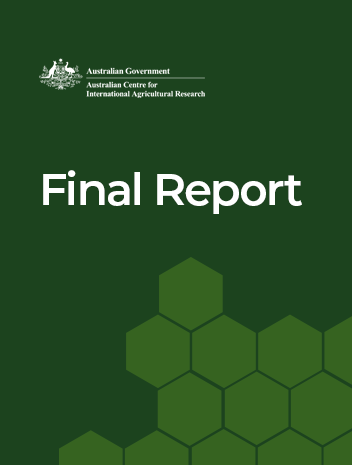- HomeHome
-
About ACIAR
- Our work
- Our people
-
Corporate information
- ACIAR Audit Committee
- Commission for International Agricultural Research
- Policy Advisory Council
- Agency reviews
- Executive remuneration disclosure
- Freedom of information (FOI)
- Gifts and benefits register
- Information publication scheme
- List of new agency files
- Contracts
- Legal services expenditure
- Privacy impact assessment register
- Commonwealth Child Safe Framework
- Benefits to Australia
- Careers
- 40 years of ACIAR
-
What we do
- Programs
- Cross-cutting areas
- Resources
- Where we work
-
Funding
- Research projects
- Fellowships
-
Scholarships
- John Allwright FellowshipScholarships to study in Australia for ACIAR partner country scientists to have Australian postgraduate qualifications
- ACIAR Pacific Agriculture Scholarships and Support and Climate Resilience Program
- Alumni Research Support Facility
- Publications
- News and Outreach
Project final report
Diversifying rural poultry production in Myanmar – opportunities for small-scale farmers - final report
Date released
02 May 2019
Publication Code
LS/2018/106
Overview
Over the past few years, the demand by consumers for poultry meat in Myanmar has increased dramatically. Rises in urbanization, incomes and population size are significant factors in this trend. However, the supply of indigenous chickens is often inadequate to meet consumer demand due to reliance on normal village extensive production methods, i.e. natural mating with egg incubation under broody hens, and the very high attrition rate in young chicks. In addition, the performance of birds is limited by the extensive management involving either significant reliance on the birds’ ability to forage for food in the environment and/or limited feeding of grain or poultry feed, often with widely varying nutrient composition.
Intensive/semi-intensive indigenous chicken production has a great potential to provide small-scale farmers with additional business opportunities, because 1) indigenous chicken are sold at premium prices that are often up to four times that of broiler chickens, 2) indigenous chicken are the preferred poultry meat for consumption, 3) indigenous chicken are raised sustainably under free-range conditions without the use of antimicrobials, and 4) indigenous chicken are in high demand because of the increased health consciousness of consumers.
The small-research and development activity reported here focused on identifying opportunities for diversifying indigenous poultry production by developing an intensive/semi-intensive indigenous chicken production system that can be adopted by a significant proportion of small-scale farmers (in particular women), across the whole country. The research was based on preliminary activities that commenced in the ACIAR funded DAHAT PAN project (AH/2011/054).



